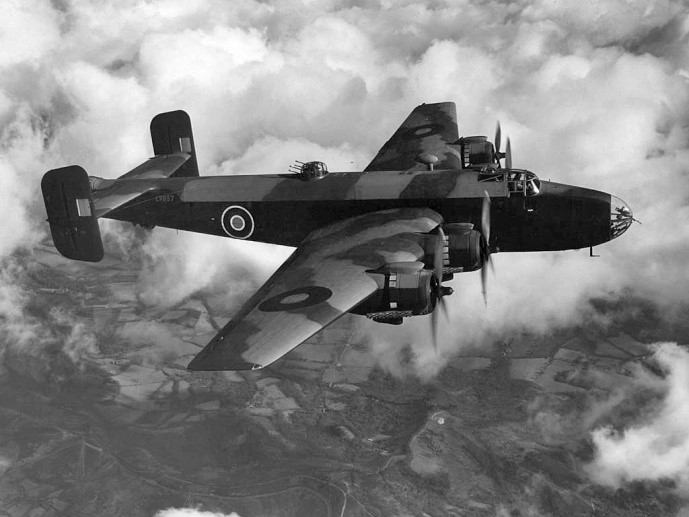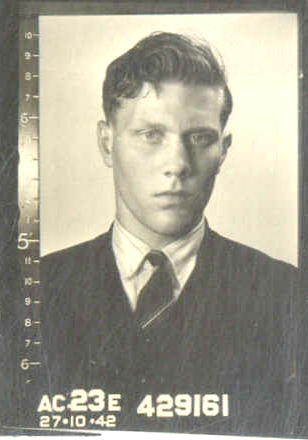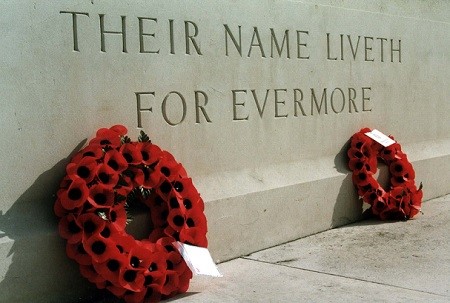Flight Sergeant William Tudberry, the son of George William Tudberry and Lily Tudberry, was born at Clifton in Queensland on 25th October 1923. He was educated at the Pilton State School and after completing his primary schooling he attended the Toowoomba Grammar School where he passed the Junior Public Examination in November 1940. After leaving school he entered employment as a Clerk. He applied for aircrew training in the Royal Australian Air Force on 21st May 1942. He had previously served in the Citizen Military Force as a Sapper with the 61st Royal Australian Army Engineers. Flight Sergeant William Tudberry, at the age of 19 years, enlisted in the Citizen Air Force of the R.A.A.F. at No. 2 Recruiting Centre in Sydney on 27th October 1942 after giving an undertaking that he would serve for the duration of the war and an additional twelve months. At the time of his enlistment he was unmarried, employed as a Clerk and residing at 1 Second Avenue, Willoughby, New South Wales. His physical description at the time of enlistment was that he was 5 feet 10 inches in height and weighed 152 pounds. He a fair complexion, blue eyes and fair hair. He stated that he was of the Church of England religion. He gave his next of kin as his mother, Mrs Lily Tudberry, residing at 1 Second Avenue, Willoughby, New South Wales. His mother’s address was later changed to c/- Mrs J. Evans, Poowong, South Gippsland in Victoria.
Flight Sergeant William Tudberry was allotted the service number of 429161 and he joined No. 1 Bombing & Gunnery School at Evans Head in New South Wales on 27th October 1942. He joined No. 2 Initial Training School at Lindfield in New South Wales on 6th December 1942 where he was trained in the basics of service life. He joined No. 8 Elementary Flying Training School at Narrandera in New South Wales on 23rd February 1943. He rejoined No. 1 Bombing & Gunnery School on 31st May 1943 and he passed No. 33 (Air Gunner) Course there on 24th June 1943. Upon completion of his course he was awarded the Air Gunner Qualification Badge and promoted to the rank of Temporary Sergeant on 24th June 1943. He joined No. 2 Embarkation Depot at Bradfield Park in New South Wales on 25th June 1943 and he was granted pre-embarkation leave during the period 25thJune until 3rd July 1943 to farewell his family and finalize his personal affairs prior to movement overseas on attachment to the Royal Air Force. He embarked from Brisbane in Queensland on 14th July 1943 and he disembarked in England on 24th August 1943. He joined No. 11 Personnel Despatch & Reception Centre at Bournemouth on 27th August 1943. He joined No. 27 Operational Training Unit at Royal Air Force Station Lichfield on 7th September 1943 where he trained for night bombing using Vickers Wellington aircraft. He joined No. 1658 (Heavy) Conversion Unit at Royal Air Force Station Riccall on 14th September 1943 where he was trained for air operations on Halifax aircraft. He was promoted to the rank of Temporary Flight Sergeant on 24th December 1943. He joined No. 10 Squadron at Royal Air Force Station Melbourne in Yorkshire for operational duty on 7th January 1944.

Halifax Bomber in flight
Flight Sergeant William Tudberry was an Air Gunner and crew member of a 10 Squadron Royal Air Force Halifax bomber LW717 that was lost as a result of enemy action during air operations against an enemy target at Blainville in France on 29th June 1944. Subsequent information from German sources received by the International Red Cross Committee in Geneva stated that the seven members of the Halifax’s crew lost their lives and that three had been identified. William Tudberry was not one of the bodies identified. After the cessation of hostilities in France the French authorities Department of Oise sent a burial list to the 21st Army Group. The list advised that William Tudberry was buried in the cemetery at Feigneux 40 miles north-east of Paris in France on 30th June 1944.
No. 1 Missing Research & Enquiry Unit visited the Feigneux Cemetery in 1947 and submitted the following report of their investigations into the resting place of William Tudberry’s crew:
With reference to your above quoted letter, as there was no record here of the order of the individual graves, a visit was paid to Feigneux Cemetery on 30th May 1947. We met the present Mayor, M. Perrin, on arriving at the village and proceeding with him to the cemetery just north of the village. There we found the graves in the far right hand corner. They had every sign of careful attention, well maintained with planted flowers and china wreaths. Each one was marked by a white wooden cross bearing just the name of the casualty and the date 29th June 1944, with the exception of the first cross on the left, which was without inscription. There was no indication of registration by G.R. & E.
The Mayor stated he was a prisoner of war at the time of the casualty but on return to the village he learnt the following. The aircraft crashed in a copse some 2 kilometres from the village and exploded on impact. Seven bodies were found by the villagers, six of whom were identified. The bodies were brought to the village, coffined, and placed in a chapel, with numerous wreaths and flowers. The Germans in the region wished to remove the bodies but the local population adopted an attitude that made it impossible for the enemy to do so, who then threatened them with reprisals. The bodies were then buried in the communal cemetery. Crosses are those originally erected by the municipality and although they have stood the elements very well it is recommended correctly inscribed pre-fabricated crosses be erected as soon as possible. (Author’s note: The first grave containing an unidentified body was that of Pilot Officer M. Livesey).
Flight Sergeant William Tudberry, for his service during World War 2, was awarded the Air Gunner Qualification Badge, the 1939/1945 Star, the Aircrew Europe Star with France and Germany Clasp, the War Medal, the Defence Medal and the Australian Service Medal 1939/1945. His name is commemorated on Panel No. 131 at the Australian War Memorial in Canberra and locally on the Toowoomba Grammar School World War 2 Honour Board. His headstone in the Feigneux Communal Cemetery contains the family inscription “Duty Nobly Done. Ever Remembered By His Loving Mother And Jim”.
Note
William Tudberry’s younger brother James Tudberry (423357) also served overseas on attachment to the Royal Air Force with No. 10 Squadron. He was awarded a Distinguished Flying Cross and Bar.
Toowoomba Grammar School archive records show that he enrolled as a boarder on 1st February 1938 and left the School on 15th November 1940. His parent was shown as Mr George William Tudberry of Pilton. In the November 1939 School Magazine it was reported that he passed the Junior examination in six subjects and he played in the 1st XV. In the May 1940 School Magazine the report stated that he was selected in the QGPS XV and received Colours for football.




